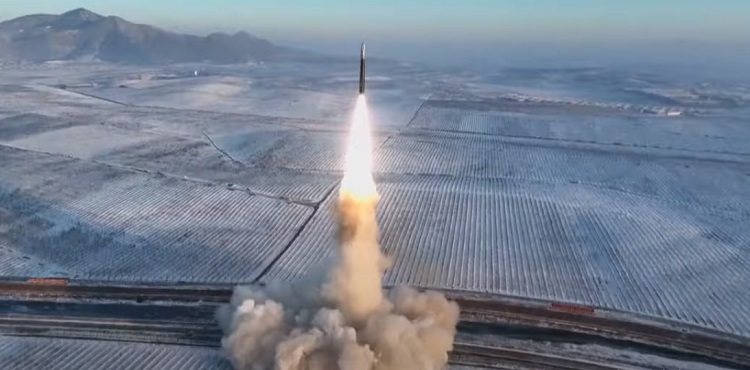On Monday, North Korea announced that it conducted a flight test of a new intermediate-range missile utilizing solid fuel, featuring a hypersonic warhead.
This development is part of North Korea’s ongoing efforts to enhance its weaponry, focusing on more potent and challenging-to-detect arms capable of reaching distant US targets in the region.
The disclosure from North Korea’s state media followed reports by the South Korean and Japanese militaries, which detected the missile launch from a site near Pyongyang, marking North Korea’s first ballistic test of 2024.
This launch occurred two months after North Korea declared a successful test of engines for a novel solid-fuel intermediate-range ballistic missile.
This strategic move signifies the nation’s commitment to advancing its arsenal, particularly weapons designed for targeting US military installations in Guam and Japan.
Assessing Hypersonic Warhead Maneuverability

The purpose of the launch on Sunday was to evaluate the hypersonic warhead’s maneuverability and to confirm the solid-fuel engine reliability of the missile.
According to the report, this warhead is an improved version that was designed for intermediate-range strikes over earlier models.
Missiles equipped with built-in solid propellants offer advantages such as quicker launch readiness, increased mobility, and easier concealment.
In theory, these attributes make it more challenging for adversaries to detect and preemptively respond to a launch.
While the report characterized the test as successful, it refrained from providing specific details. Additionally, there was no mention of whether North Korean leader Kim Jong Un was present during the test.
The report emphasized that the activity was part of the country’s routine weapons development initiatives and asserted that it did not compromise the security of neighboring nations.
North Korea’s Test Boosts Hypersonic and IRBM Tech
The recent test conducted by North Korea indicates a dual effort to progress its hypersonic weaponry and cultivate solid-fuel Intermediate-Range Ballistic Missiles (IRBMs) as potential delivery systems.
However, according to Chang Young-keun, a missile expert at South Korea’s Research Institute for National Strategy, the primary emphasis of Sunday’s launch would have been on assessing the reliability and functionality of the missile’s solid-fuel first-stage.
